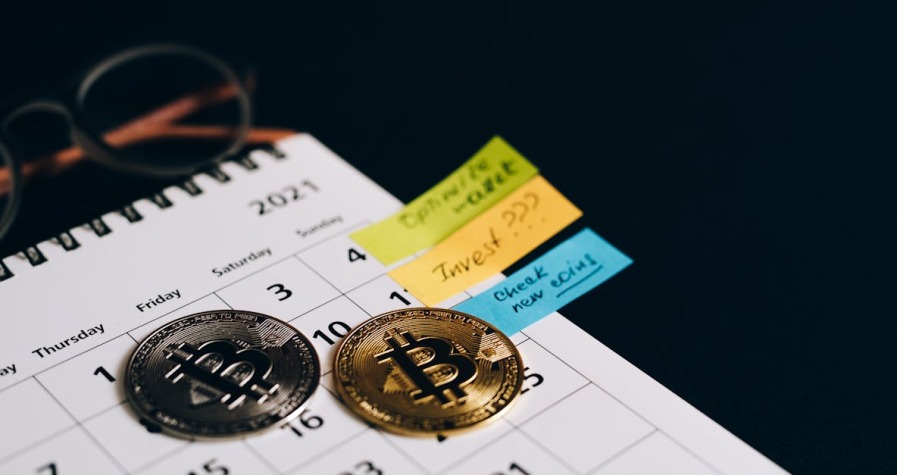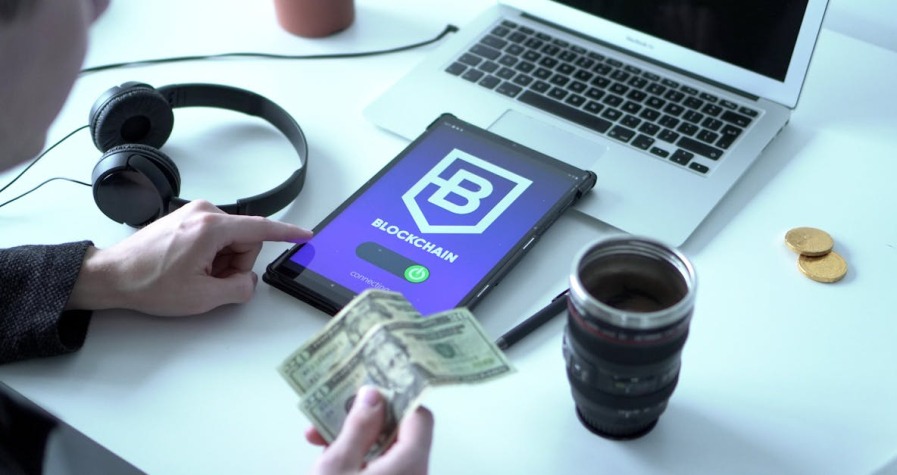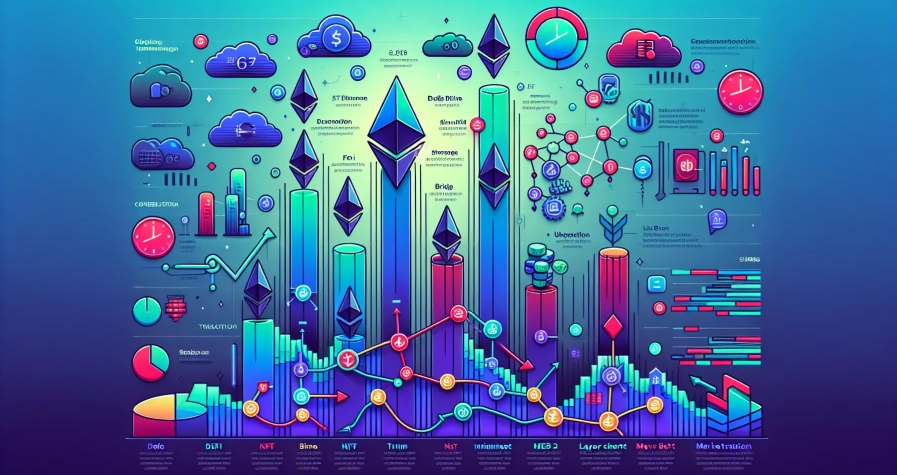Trading Bitcoin on Binance can seem overwhelming if you’re new to cryptocurrency exchanges. As the world’s largest crypto trading platform, Binance offers powerful tools and features that let you buy, sell and trade Bitcoin with confidence. Whether you’re looking to make your first Bitcoin purchase or execute advanced trading strategies, understanding the platform’s interface and functionality is essential.
Binance provides multiple trading options including spot trading, futures and margin trading. You’ll find competitive fees, high liquidity and robust security measures that make it a popular choice among both beginners and experienced traders. The platform supports dozens of trading pairs with Bitcoin, giving you flexibility in how you approach the market.
Getting started requires creating an account, completing verification and understanding the basic trading mechanics. Once you’ve mastered these fundamentals, you’ll be able to navigate Binance’s features effectively and make informed trading decisions that align with your investment goals.
Getting Started with Binance
Getting started with Binance requires three essential steps: account creation, identity verification, and security setup. These foundational steps ensure you can trade Bitcoin safely and access all platform features.
Creating Your Binance Account
Creating your Binance account takes approximately 3-5 minutes and requires only basic information. Navigate to the official Binance website and click the “Register” button in the top-right corner.
Enter your email address and create a strong password containing at least 8 characters with uppercase letters, lowercase letters, numbers, and symbols. Binance automatically sends a verification email to your registered address within 60 seconds.
Click the verification link in your email to activate your account. You can alternatively register using your mobile phone number if you prefer SMS verification over email confirmation.
Completing Identity Verification
Identity verification unlocks higher withdrawal limits and access to advanced trading features on Binance. The platform requires KYC (Know Your Customer) verification for regulatory compliance across 180+ supported countries.
Upload a government-issued photo ID such as a passport, driving licence, or national identity card. Ensure your document is valid, clearly visible, and matches the personal information you provide during registration.
Complete the facial verification process using your device’s camera or upload a clear selfie. Binance’s verification system typically processes applications within 15 minutes for standard verification and up to 24 hours for advanced verification levels.
Securing Your Account
Account security protects your Bitcoin and trading funds through multiple authentication layers. Enable two-factor authentication (2FA) immediately after account creation using Google Authenticator, SMS, or email verification codes.
Configure withdrawal whitelist addresses to restrict Bitcoin withdrawals to pre-approved wallet addresses only. This security measure prevents unauthorised transfers even if someone gains access to your account credentials.
Set up anti-phishing codes that appear in all legitimate Binance emails to help you identify official communications. Binance displays this personalised code in every email, protecting you from phishing attempts and fraudulent messages.
| Security Feature | Setup Time | Protection Level |
|---|---|---|
| Two-Factor Authentication | 2-3 minutes | High |
| Withdrawal Whitelist | 5-10 minutes | Very High |
| Anti-Phishing Code | 1 minute | Medium |
| Device Management | Ongoing | High |
Understanding Bitcoin Trading on Binance
Binance offers two distinct approaches for Bitcoin trading that cater to different risk profiles and investment strategies. You’ll find comprehensive tools and features designed to support both immediate transactions and speculative contract trading.
Spot Trading vs Futures Trading
Spot trading gives you direct ownership of Bitcoin through immediate transactions at current market prices. You purchase actual Bitcoin that’s instantly credited to your wallet upon trade execution, making this approach ideal for beginners due to its straightforward nature.
Futures trading operates through contracts that speculate on Bitcoin’s future price without requiring direct ownership of the underlying asset. You can utilise leverage to amplify your trading position, controlling larger amounts than your initial capital investment. This method carries higher risk due to leverage but offers opportunities to profit from both rising and falling markets.
| Feature | Spot Trading | Futures Trading |
|---|---|---|
| Asset Ownership | Own actual Bitcoin immediately | Own contracts, not Bitcoin |
| Settlement | Instantaneous execution | Future date settlement |
| Leverage | No leverage available | Leverage up to 125x |
| Risk Level | Lower risk profile | Higher due to leverage |
| Price Basis | Current market price | Futures price with premium/discount |
Trading Pairs and Market Types
Bitcoin trading pairs on Binance include fiat currencies such as USD and EUR alongside cryptocurrency pairs like USDT and ETH. Each pair represents the exchange rate between Bitcoin and the quoted currency, allowing you to diversify your trading strategies across different market conditions.
Spot markets facilitate immediate Bitcoin transactions at current prices, whilst futures markets enable contract trading with predetermined settlement dates. Binance supports over 100 Bitcoin trading pairs across both market types, providing extensive flexibility for your trading approach.
Reading the Trading Interface
The Binance trading interface presents five critical components that you’ll use for every trade. Price charts display Bitcoin’s historical and real-time movements through candlestick patterns, line graphs, and technical indicators that help you analyse market trends.
Order books reveal market depth by showing active buy orders (bids) and sell orders (asks) at various price levels. You can assess market liquidity and identify optimal entry and exit points through this real-time data.
Order types include market orders for immediate execution at current prices, limit orders that execute only at your specified price, and stop-limit orders that trigger when Bitcoin reaches predetermined levels. Your wallet balance displays available funds and Bitcoin holdings for trading, whilst trade history shows completed transactions and market activity.
Futures trading interfaces include additional leverage controls, margin balance indicators, and contract expiry dates that you must monitor throughout your trading sessions.
How to Buy Bitcoin on Binance
Binance offers multiple purchasing methods for Bitcoin acquisition, accommodating both fiat currency deposits and cryptocurrency conversions. You can fund your account through traditional payment methods or exchange existing digital assets for Bitcoin.
Using Fiat Currency
Account Setup and Verification
Complete identity verification (KYC) before purchasing Bitcoin with fiat currency. This process unlocks higher deposit limits and provides access to all trading features on the platform.
Direct Fiat Deposits
Navigate to “Wallet” > “Fiat and Spot” > “Deposit” to fund your account with GBP or other supported currencies. Binance accepts bank transfers, debit cards, and credit cards as primary payment methods for fiat deposits.
Buy Crypto Feature
Access Binance’s “Buy Crypto” section to purchase Bitcoin directly with your preferred fiat currency. Select GBP as your base currency, enter the desired purchase amount, and choose from available payment options including Faster Payments and card transactions.
Peer-to-Peer Trading
Use Binance P2P marketplace for direct Bitcoin purchases from verified users. Select GBP as your fiat currency, browse available offers, complete payment to the seller, and receive Bitcoin after transaction confirmation.
| Payment Method | Processing Time | Minimum Amount |
|---|---|---|
| Bank Transfer | 1-3 business days | £10 |
| Debit/Credit Card | Instant | £15 |
| P2P Trading | 15-30 minutes | £20 |
Converting Other Cryptocurrencies
Crypto-to-Bitcoin Conversion
Deposit existing cryptocurrencies to your Binance spot wallet through the “Deposit” function. Popular conversion pairs include USDT/BTC, ETH/BTC, and BNB/BTC for seamless Bitcoin acquisition.
Convert Feature
Access Binance’s “Convert” tool for instant cryptocurrency exchanges at competitive market rates. Enter your source cryptocurrency amount, select Bitcoin as the target asset, and execute the conversion with a single click.
OTC Portal Trading
Utilise Binance’s Over-the-Counter (OTC) portal for large-volume cryptocurrency conversions exceeding £10,000. This service provides personalised rates and dedicated support for institutional-grade Bitcoin purchases.
Trading Pair Selection
Choose from over 50 Bitcoin trading pairs including major cryptocurrencies like Ethereum, Litecoin, and Cardano. Each trading pair offers different liquidity levels and price spreads depending on market demand.
Executing Bitcoin Trades
Bitcoin trading execution on Binance utilises three primary order types that provide different levels of control over price and timing. Each order type serves specific trading strategies and risk management approaches.
Placing Market Orders
Market orders execute Bitcoin trades instantly at the current market price, prioritising speed over price precision. You submit a buy or sell order that matches immediately with existing orders in the order book, ensuring instant trade execution regardless of minor price fluctuations.
Market orders prove most effective when you require immediate position entry or exit. Bitcoin’s high liquidity on Binance typically results in minimal slippage, though prices may vary slightly between order placement and execution during volatile market conditions.
Navigate to the Spot Trading section, select your Bitcoin trading pair such as BTC/USDT, choose “Market” as your order type, enter the quantity, and click “Buy” or “Sell” to execute immediately.
Setting Limit Orders
Limit orders enable you to specify the exact price at which you want to buy or sell Bitcoin. Your order remains pending until the market price reaches your predetermined limit, providing complete price control over your Bitcoin transactions.
Buy limit orders execute only when Bitcoin’s price drops to or below your specified price, whilst sell limit orders activate when the price rises to or above your target. This approach allows you to target specific price levels and potentially secure better entry or exit points.
Place a buy limit order below the current market price to purchase Bitcoin at a discount, or set a sell limit order above current prices to capture profits at predetermined levels. Orders remain active until filled, cancelled, or expired based on your time-in-force settings.
Using Stop-Loss Orders
Stop-loss orders on Binance function as stop-limit orders, incorporating both a stop price trigger and a limit price execution. This dual-price mechanism provides risk management protection whilst maintaining control over your final execution price.
The stop price acts as your trigger point – when Bitcoin reaches this level, the system converts your stop-loss into a limit order at your specified limit price. This prevents unlimited losses whilst ensuring you don’t sell below your acceptable minimum price during market gaps.
Configure a stop-loss sell order by setting your stop price below current market value and your limit price slightly below the stop price. For example, if Bitcoin trades at £40,000, set a stop price at £38,000 with a limit price at £37,800 to protect against further downside whilst allowing for minor price fluctuations during execution.
| Order Type | Execution Speed | Price Control | Risk Management |
|---|---|---|---|
| Market Order | Instant | Low | Moderate |
| Limit Order | Variable | High | High |
| Stop-Loss Order | Triggered | Moderate | Very High |
Advanced Trading Features
Binance offers sophisticated trading capabilities that enhance your Bitcoin trading experience beyond basic market operations. These advanced features include margin trading options and comprehensive technical analysis tools that professional traders use to maximise their trading potential.
Margin Trading with Bitcoin
Margin trading allows you to borrow funds from Binance to increase your buying power and amplify potential returns on Bitcoin trades. You can access up to 10x leverage on Bitcoin spot margin trading, meaning you control £10,000 worth of Bitcoin with just £1,000 of your own capital.
Key margin trading strategies include:
- Leverage management: Start with low leverage ratios (2x-3x) to minimise liquidation risks whilst gaining experience
- Stop-loss implementation: Set automatic exit points at 5-10% below your entry price to limit potential losses
- Take-profit orders: Secure gains automatically when Bitcoin reaches your target price levels
- Risk-to-reward ratios: Maintain a minimum 1:2 ratio where potential profits exceed potential losses by at least double
Monitor your margin level continuously through Binance’s real-time dashboard to avoid forced liquidation. The platform calculates your margin ratio as (Total Asset Value – Total Borrowed) ÷ Total Borrowed × 100%. Maintain this ratio above 110% to prevent automatic position closure.
Using Technical Analysis Tools
Binance integrates TradingView’s advanced charting platform directly into its interface, providing access to over 100 technical indicators for Bitcoin price analysis. You can customise chart timeframes from 1-minute intervals to monthly views depending on your trading strategy.
Essential technical indicators include:
- Moving Averages: Use 20-day and 50-day simple moving averages to identify trend directions and potential reversal points
- Relative Strength Index (RSI): Monitor overbought conditions above 70 and oversold conditions below 30 to time your entries
- Bollinger Bands: Track price volatility and identify breakout opportunities when Bitcoin price moves outside the bands
- MACD (Moving Average Convergence Divergence): Spot momentum changes through signal line crossovers
Access drawing tools including trend lines, support and resistance levels, and Fibonacci retracements to mark key price levels on your charts. Save multiple chart layouts for different trading timeframes and strategies, allowing quick switching between scalping setups and longer-term position analysis.
The platform stores your technical analysis preferences and synchronises them across all devices, ensuring consistent access to your customised trading environment whether you’re using desktop or mobile applications.
Managing Your Bitcoin Holdings
Once you’ve acquired Bitcoin through Binance’s trading platform, managing your holdings becomes crucial for security and accessibility. Binance provides multiple storage solutions and transfer options to accommodate different security preferences and trading strategies.
Storing Bitcoin on Binance
Your Bitcoin remains in the Binance Spot Wallet by default, where the platform provides custodial storage with institutional-grade security measures. Binance implements cold storage protocols for the majority of user funds, multi-signature wallets, and 24/7 monitoring systems to protect your assets. However, this custodial arrangement means you don’t control the private keys directly.
The platform’s security infrastructure includes:
- SAFU fund protection covering up to £8.6 billion in user assets
- Two-factor authentication requiring additional verification for withdrawals
- Withdrawal whitelist addresses limiting transfers to pre-approved wallets
- Anti-phishing codes protecting against fraudulent communications
Binance also offers flexible savings products where your stored Bitcoin can earn yield through lending programmes, with annual percentage yields typically ranging from 1-5% depending on market conditions.
Transferring to External Wallets
Transferring Bitcoin to external wallets gives you complete control over your private keys whilst removing reliance on Binance’s custodial services. Trust Wallet, which supports over 3 million assets across multiple blockchains, represents one popular self-custodial option for Bitcoin storage.
The transfer process requires four essential steps:
- Wallet setup – Install and configure your chosen external wallet, generating your unique Bitcoin address
- Authentication – Log into Binance and complete two-factor authentication verification
- Withdrawal initiation – Select Bitcoin from your Spot Wallet, enter the external wallet address, and specify the transfer amount
- Blockchain confirmation – Wait for network confirmations (typically 3-6 confirmations for Bitcoin transactions)
| Transfer Detail | Specification |
|---|---|
| Minimum withdrawal | 0.0005 BTC |
| Network fee | Variable (0.0002-0.001 BTC) |
| Processing time | 10-60 minutes |
| Daily limit | Up to 100 BTC (verified accounts) |
External wallet transfers carry withdrawal fees ranging from £3-15 depending on network congestion, with processing times varying based on the fee amount selected. Higher fees typically result in faster blockchain confirmations, whilst lower fees may experience delays during peak network activity.
Remember that self-custodial wallets place full responsibility for private key security on you, meaning lost keys result in permanently inaccessible Bitcoin.
Trading Fees and Costs
Trading Bitcoin on Binance involves several fee types that directly impact your profitability. Understanding these costs helps you optimise your trading strategy and maximise returns.
Understanding Binance Fee Structure
Binance employs a tiered fee structure that varies based on your account level and trading activity. Standard spot trading fees start at 0.1% for both makers (limit orders) and takers (market orders), whilst futures trading offers lower rates beginning at 0.02% for makers and 0.04% for takers.
Your trading fees decrease as you achieve higher VIP levels through increased monthly volume. Monthly trading volumes exceeding 50 BTC unlock VIP status, providing progressive fee reductions across all trading products. Maker fees remain consistently lower than taker fees, with VIP users potentially earning rebates on limit orders that add liquidity to the order book.
Additional costs include deposit and withdrawal fees. Cryptocurrency deposits remain free regardless of the token or network used. Withdrawal fees vary significantly by cryptocurrency and network congestion, with options to select more cost-effective blockchain networks for transfers.
| Fee Type | Standard Rate | VIP Rate | Payment Method |
|---|---|---|---|
| Spot Trading (Maker) | 0.1% | 0.02%-0.09% | Per transaction |
| Spot Trading (Taker) | 0.1% | 0.04%-0.10% | Per transaction |
| Futures (Maker) | 0.02% | 0.00%-0.017% | Per transaction |
| Futures (Taker) | 0.04% | 0.017%-0.040% | Per transaction |
| Crypto Deposits | Free | Free | Network dependent |
| Withdrawals | Variable | Variable | Network + token dependent |
Ways to Reduce Trading Fees
Enabling BNB fee payments provides the most immediate cost reduction. Holding Binance Coin (BNB) and activating fee payment with BNB delivers an instant 25% discount on all trading fees across spot and futures markets.
Increasing your trading volume systematically reduces fees through VIP tier progression. Regular trading activity that maintains monthly volumes above 50 BTC unlocks VIP 1 status, with further reductions available at higher tiers. Combining high volume with BNB payments maximises fee efficiency.
Strategic order placement significantly impacts costs. Using limit orders positions you as a market maker, avoiding taker fees and potentially earning rebates at higher VIP levels. Futures trading generally offers lower base fees compared to spot trading, particularly beneficial for active Bitcoin traders.
Network selection for withdrawals affects transfer costs substantially. Choosing efficient blockchain networks like Binance Smart Chain instead of Ethereum reduces withdrawal expenses by up to 90% for supported tokens.
Additional cost-saving methods include participating in promotional campaigns and referral programmes. Binance frequently offers cashback schemes and fee discounts for new users, whilst successful referrals generate commission income that offsets your trading costs.
Risk Management Strategies
Risk management becomes critical when trading Bitcoin on Binance due to cryptocurrency’s high volatility and potential for significant losses. Implementing proven strategies protects your capital and ensures long-term trading viability.
The 1-2% Risk Rule
Limiting risk exposure to 1-2% of your total trading capital per trade prevents catastrophic losses during market volatility. With a £5,000 portfolio you’d risk £50-£100 maximum per individual trade. This conservative approach preserves capital through Bitcoin’s frequent price swings whilst maintaining sufficient funds for future trading opportunities.
Setting Your Risk Tolerance
Define your acceptable loss threshold before entering any Bitcoin position on Binance. Determine whether you’re pursuing short-term gains or long-term growth strategies as this influences your risk parameters. Clear risk tolerance prevents emotional decision-making during volatile market periods and helps maintain disciplined trading behaviour.
Stop-Loss and Take-Profit Orders
Binance’s automated order features eliminate the need for constant market monitoring whilst controlling downside risk. Stop-loss orders automatically sell your Bitcoin when losses reach your predetermined threshold. Take-profit orders secure gains by selling at your target price levels. These tools execute trades based on your strategy rather than emotional reactions to market movements.
Leverage Limitation
Binance offers leverage up to 125x on Bitcoin futures but excessive leverage increases liquidation risk exponentially. Conservative leverage usage protects against catastrophic losses when Bitcoin experiences sudden price movements. Even experienced traders typically limit leverage to 2-5x to maintain adequate margin buffers during volatile periods.
Portfolio Diversification
Spreading investments across multiple cryptocurrency assets reduces exposure to Bitcoin’s individual price movements. Binance supports over 350 cryptocurrencies allowing diversification across different market sectors and blockchain projects. Diversifying trading strategies between spot trading, arbitrage, and swing trading further minimises portfolio risk concentration.
Binance Risk Management Tools
Binance’s integrated features help automate and distribute risk management across your Bitcoin positions:
- Auto-Invest spreads purchases across regular intervals reducing timing risk
- Staking generates passive income whilst holding Bitcoin long-term
- Grid Trading Bots automate buy-low sell-high strategies during sideways markets
- Portfolio Margin optimises capital efficiency across multiple positions
These tools work together to create systematic risk management approaches that function independently of manual oversight.
Conclusion
Trading Bitcoin on Binance opens up a world of opportunities with its comprehensive platform and robust security features. You’ve now got the knowledge to navigate everything from basic spot trades to advanced futures contracts whilst managing your risk effectively.
Remember that successful Bitcoin trading isn’t just about making quick profits—it’s about developing a disciplined approach to risk management and continuously learning from market movements. Whether you’re holding for the long term or actively trading you’ve got access to institutional-grade tools that can support your investment strategy.
Your journey into Bitcoin trading on Binance starts with that first account creation but your success depends on implementing proper security measures and sticking to your risk management principles. The platform’s extensive features and competitive fee structure provide the foundation you need to trade confidently in the dynamic cryptocurrency market.
Frequently Asked Questions
How do I get started trading Bitcoin on Binance?
To start trading Bitcoin on Binance, you need to complete three essential steps: create an account (takes 3-5 minutes), complete identity verification (KYC) to unlock higher limits and advanced features, and set up security measures including two-factor authentication, withdrawal whitelist addresses, and anti-phishing codes to protect your funds.
What’s the difference between spot trading and futures trading Bitcoin on Binance?
Spot trading involves buying actual Bitcoin at current market prices with immediate ownership, making it ideal for beginners. Futures trading uses contracts to speculate on Bitcoin’s future price without owning the asset, allowing leverage but carrying higher risk. Spot trading is safer whilst futures offers potential for greater profits through leverage.
What are the main order types available for Bitcoin trading on Binance?
Binance offers three primary order types: market orders (execute instantly at current price for speed), limit orders (specify exact buying/selling price for control), and stop-loss orders (use trigger and limit prices for risk management). Each serves different trading strategies and risk tolerance levels.
How much does it cost to trade Bitcoin on Binance?
Standard spot trading fees start at 0.1%, whilst futures trading begins at 0.02% for makers and 0.04% for takers. You can reduce fees by using BNB for payments (25% discount), increasing trading volume for VIP status, or using limit orders. Cryptocurrency deposits are free, but withdrawal fees vary by network congestion.
What risk management tools does Binance offer for Bitcoin trading?
Binance provides several risk management features including stop-loss and take-profit orders, auto-invest for regular purchases, staking options, grid trading bots, and portfolio margin. The platform also offers advanced charting tools with over 100 technical indicators and TradingView integration for comprehensive market analysis and risk assessment.
Can I store my Bitcoin on Binance or transfer it to an external wallet?
Bitcoin is stored in your Binance Spot Wallet by default, offering institutional-grade security with cold storage and multi-signature protection. You can also transfer Bitcoin to external wallets for greater control, though this requires managing your own private keys and involves withdrawal fees and blockchain confirmation times.









